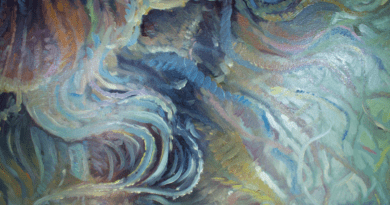Our Monitors are Fooling Us
Most of us have replaced our CRT computer monitors with LCD monitors, creating a significant problem for artists. LCD monitors are thin and light, and may produce less eye fatigue because they to not have the scan refresh lines of a CRT. For most users, these are definate advantages. However, for artists there is one major drawback with the LCD monitor. LCD monitors typically reduce the number of bits available for each color from 8 to 6. Computers are capable of generating 24-bit “true” color – 8 bits for each of the three colors on each pixel, or 16,777,216 colors. In contrast, most LCD displays are limited to 6 bits, and will display only 262,144 colors. To correct for this problem, monitor manufacturers use a technique called dithering, where two pixels display slightly different colors in order to trick the eye into thinking it sees a third non-existant color.
In addition, monitor manufacturers often heighten the constrast of the display, so that it will look better on the shelf of the computer store. One manufacturer even boosts the blue in the display so that the whites look whiter. All of this becomes significant when an artist is trying to photograph art work and use the monitor to predict what others will see. Preparing images for printing is especially challenging. To the trained artist eye, the LCD monitor is always missing something of importance. This is because certain middle shades are being dropped, and colors are merged. For less complex images, this may not be much of a problem. But when displaying wider variances of hue, chroma, and value, the effect can sometimes be shocking. It is important for artists to be aware of these issues when preparing their artwork for a wider audience on the Internet or in print media.




